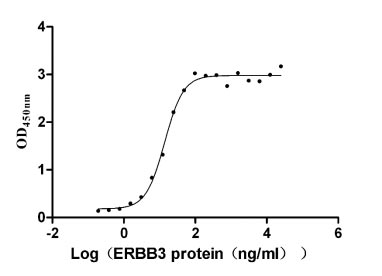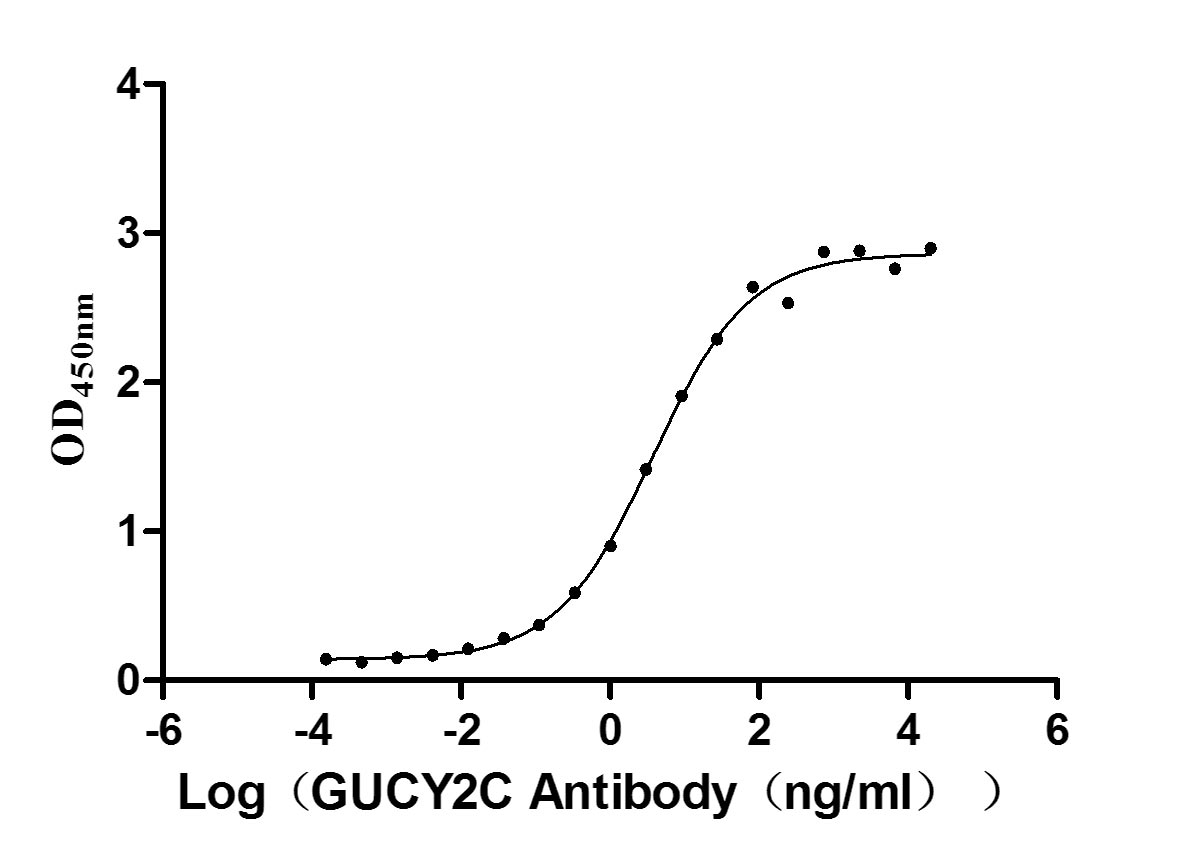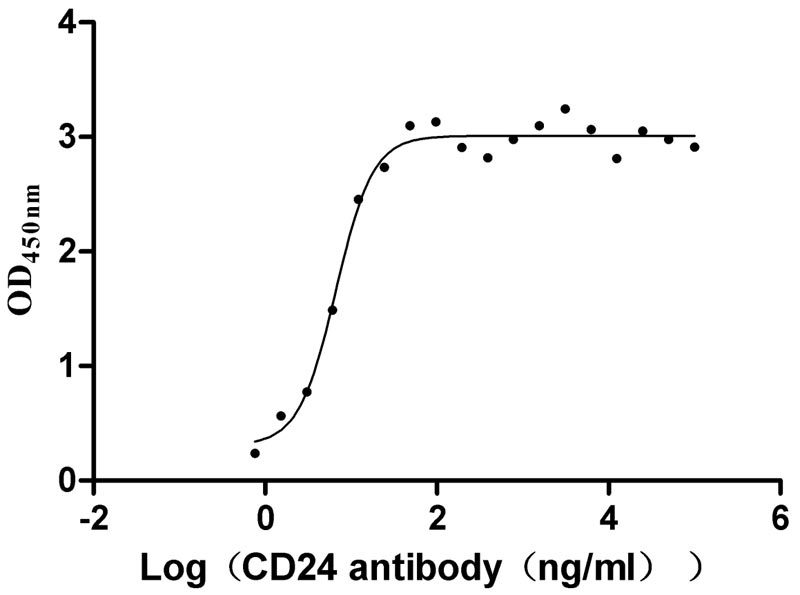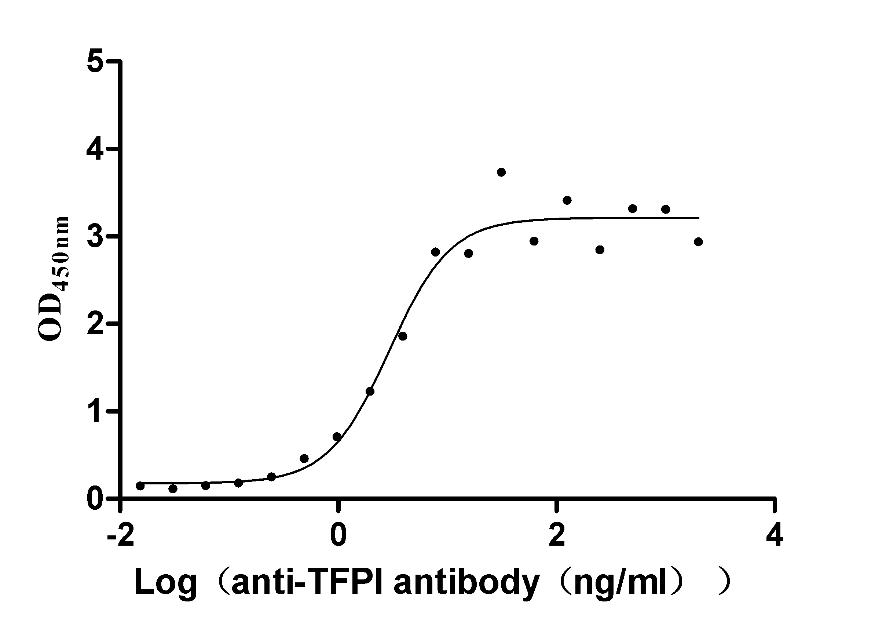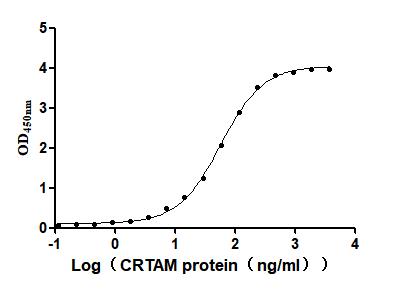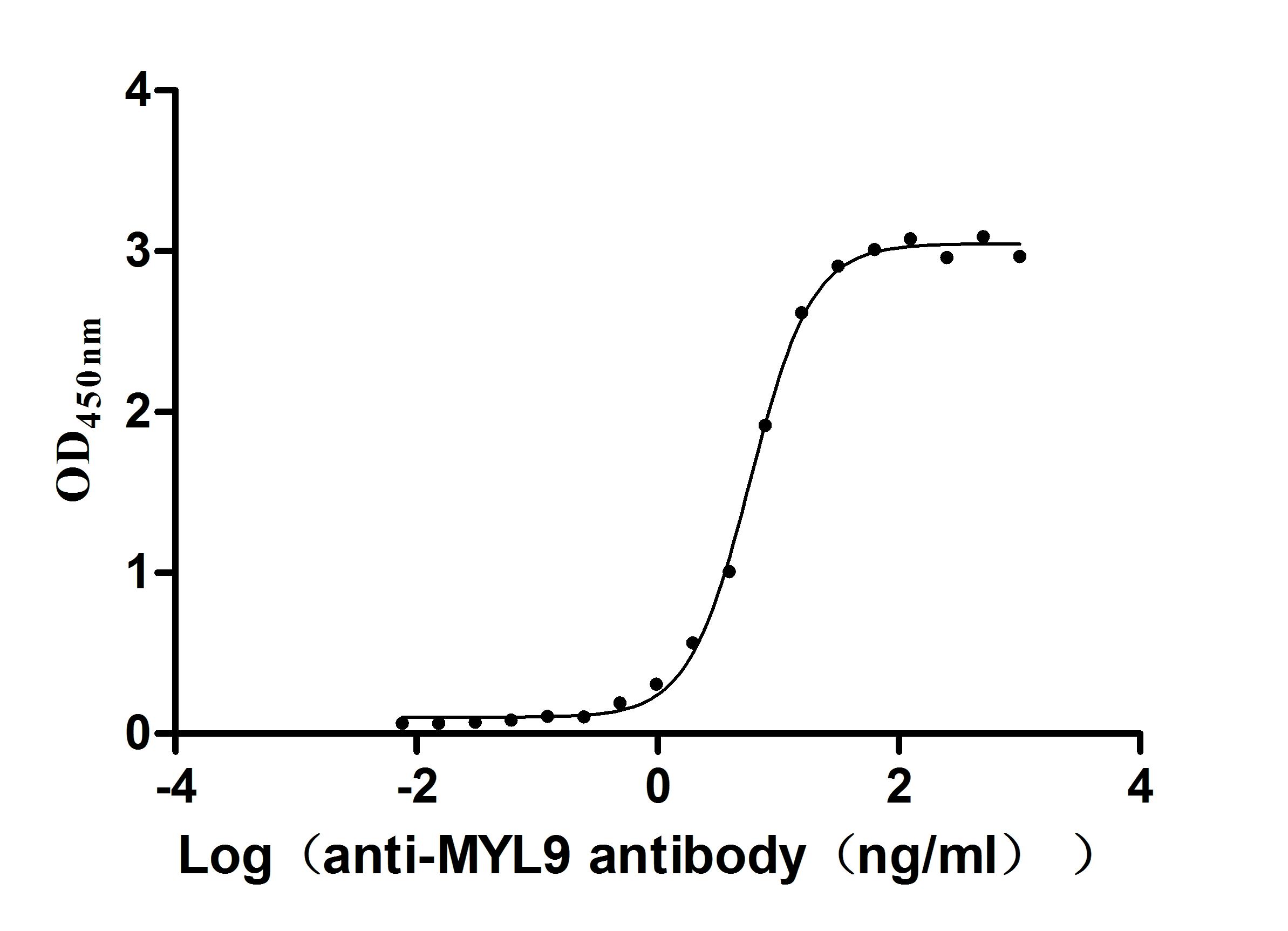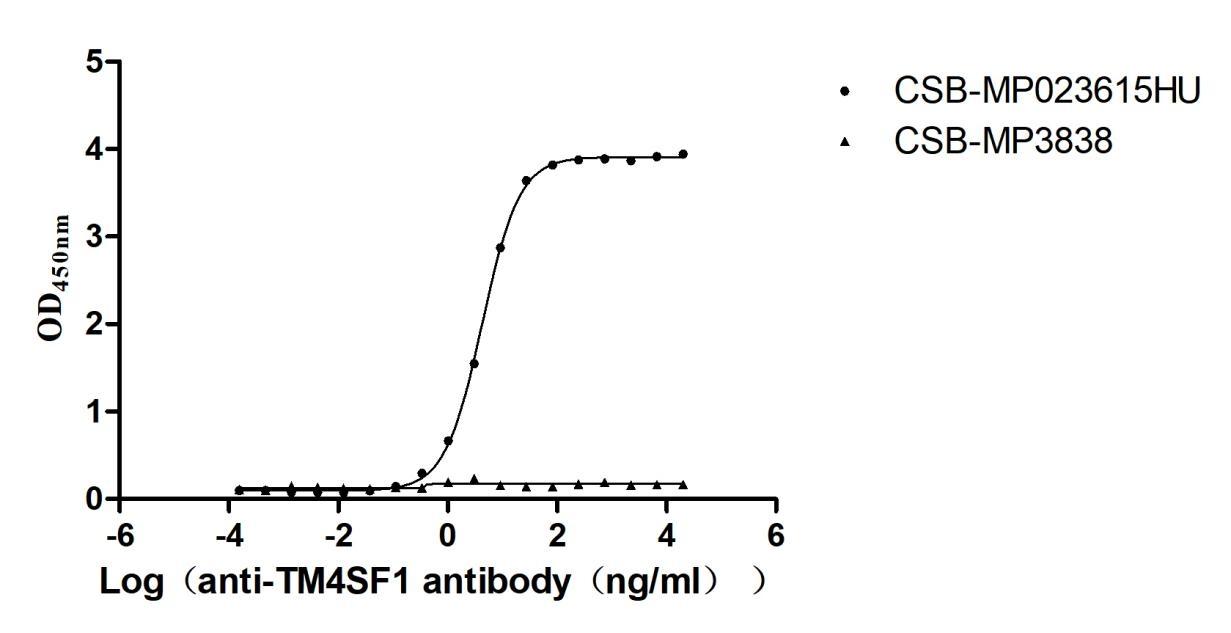Recombinant Mouse Sodium channel protein type 10 subunit alpha (Scn10a), partial
-
中文名称:小鼠Scn10a重组蛋白
-
货号:CSB-YP750910MO
-
规格:
-
来源:Yeast
-
其他:
-
中文名称:小鼠Scn10a重组蛋白
-
货号:CSB-EP750910MO
-
规格:
-
来源:E.coli
-
其他:
-
中文名称:小鼠Scn10a重组蛋白
-
货号:CSB-EP750910MO-B
-
规格:
-
来源:E.coli
-
共轭:Avi-tag Biotinylated
E. coli biotin ligase (BirA) is highly specific in covalently attaching biotin to the 15 amino acid AviTag peptide. This recombinant protein was biotinylated in vivo by AviTag-BirA technology, which method is BriA catalyzes amide linkage between the biotin and the specific lysine of the AviTag.
-
其他:
-
中文名称:小鼠Scn10a重组蛋白
-
货号:CSB-BP750910MO
-
规格:
-
来源:Baculovirus
-
其他:
-
中文名称:小鼠Scn10a重组蛋白
-
货号:CSB-MP750910MO
-
规格:
-
来源:Mammalian cell
-
其他:
产品详情
-
纯度:>85% (SDS-PAGE)
-
基因名:
-
Uniprot No.:
-
别名:Scn10a; Sns; Sodium channel protein type 10 subunit alpha; Peripheral nerve sodium channel 3; PN3; Sensory neuron sodium channel; Sodium channel protein type X subunit alpha; Voltage-gated sodium channel subunit alpha Nav1.8
-
种属:Mus musculus (Mouse)
-
蛋白长度:Partial
-
蛋白标签:Tag type will be determined during the manufacturing process.
The tag type will be determined during production process. If you have specified tag type, please tell us and we will develop the specified tag preferentially. -
产品提供形式:Lyophilized powder
Note: We will preferentially ship the format that we have in stock, however, if you have any special requirement for the format, please remark your requirement when placing the order, we will prepare according to your demand. -
复溶:We recommend that this vial be briefly centrifuged prior to opening to bring the contents to the bottom. Please reconstitute protein in deionized sterile water to a concentration of 0.1-1.0 mg/mL.We recommend to add 5-50% of glycerol (final concentration) and aliquot for long-term storage at -20℃/-80℃. Our default final concentration of glycerol is 50%. Customers could use it as reference.
-
储存条件:Store at -20°C/-80°C upon receipt, aliquoting is necessary for mutiple use. Avoid repeated freeze-thaw cycles.
-
保质期:The shelf life is related to many factors, storage state, buffer ingredients, storage temperature and the stability of the protein itself.
Generally, the shelf life of liquid form is 6 months at -20°C/-80°C. The shelf life of lyophilized form is 12 months at -20°C/-80°C. -
货期:Delivery time may differ from different purchasing way or location, please kindly consult your local distributors for specific delivery time.Note: All of our proteins are default shipped with normal blue ice packs, if you request to ship with dry ice, please communicate with us in advance and extra fees will be charged.
-
注意事项:Repeated freezing and thawing is not recommended. Store working aliquots at 4°C for up to one week.
-
Datasheet :Please contact us to get it.
靶点详情
-
功能:Tetrodotoxin-resistant channel that mediates the voltage-dependent sodium ion permeability of excitable membranes. Assuming opened or closed conformations in response to the voltage difference across the membrane, the protein forms a sodium-selective channel through which sodium ions may pass in accordance with their electrochemical gradient. Plays a role in neuropathic pain mechanisms.
-
基因功能参考文献:
- Nav1.8 role in the inflammatory pain.CXCL13, upregulated by peripheral inflammation, acts on CXCR5 on dorsal root ganglia neurons and activates p38, which increases Nav1.8 current density and further contributes to the maintenance of inflammatory pain. PMID: 27708397
- Data suggests that increases in the expression of Nav1.8 channels, regulatory beta1 subunits and TNF receptor 1 contribute to increased nociceptor excitability and hyperalgesia in the tumor necrosis factor transgenic mice. PMID: 28558976
- that ectopic NaV1.8 expression precipitates depolarizing conduction failure in Charcot-Marie-Tooth disease PMID: 27215377
- While Scn10a transcripts are not detectible in ventricular cardiomyocytes, gene deletion results in reproducible loss of late sodium current under extreme experimental conditions. However, there are no identifiable consequences of this Scn10a deletion in the intact mouse heart at usual rates. PMID: 27806966
- Results suggest that Nav1.8 plays a role in modulating specific aspects of the retinal physiology and that starburst amacrine cells are a fundamental cellular contributor to the oscillatory potentials in mice, a clear demonstration of the dichotomy between electroretinogram b-wave and oscillatory potentials. PMID: 27984182
- These preclinical proof-of-concept data suggest that PF-01247324, its derivatives, or other Nav1.8-selective blockers merit further study for providing symptomatic therapy for cerebellar dysfunction in MS and related disorders. PMID: 25747279
- A novel splice variant of SCN10A lacking exon 11 was found in human but not detected in mouse or rat. PMID: 24763188
- Nav1.8 gain-of-function point mutation contributes to intense hyperexcitability along the afferent axon within distinct sensory neuron subtypes. PMID: 24447515
- Nav1.8 interacts with ankyrin G and they co-localize in skin nerve fibers. PMID: 24903831
- The enhanced NaV1.8 activity are essential for the development of long-lasting hyperalgesia in acid-induced, chronic, widespread muscle pain. PMID: 24957987
- Analysis of BAC transgenic strains harboring an engineered deletion of the enhancer within Scn10a revealed that the enhancer was essential for Scn5a expression in cardiac tissue. SCN10A variant rs6801957 modulated Scn5a expression in the heart. PMID: 24642470
- regulation of Nav 1.8 expression and the excitability of nociceptive primary afferent neurons may be involved in the underlying mechanisms PMID: 23773488
- Nav1.8 expression increases in dorsal root ganglion neurons following pretreatment with CC chemokine ligand 2. PMID: 22870919
- We demonstrate that 75% of dorsal root ganglion (DRG) neurons express Na(v)1.8-Cre, including >90% of neurons expressing markers of nociceptors. PMID: 22703890
- Behavioural deficits in Nav1.7/Nav1.8 knockout mice reflects a failure of action potential propagation in a mechanosensitive set of sensory neurons rather than a loss of primary transduction currents. PMID: 22449024
- The functional presence of SCN10A/Nav1.8 in intracardiac neurons is demonstrated, indicating a novel role for this neuronal sodium channel in regulation of cardiac electric activity. PMID: 22723301
- identification of enhancers in the Scn5a/Scn10a locus, regulated by TBX3 and TBX5 PMID: 22706305
- PKCepsilon phosphorylated NaV1.8 at S1452. Alanine substitution at this site blocked PKCepsilon modulation of channel properties. NaV1.8 is an important, direct substrate of PKCepsilon that mediates PKCepsilon-dependent mechanical hyperalgesia. PMID: 22426212
- Upregulation of Nav1.8 in cerebellum contributes to cerebellar dysfunction in multiple sclerosis and experimental autoimmune encephalomyelitis. PMID: 22367990
- Hypermorphic mutation of the voltage-gated sodium channel encoding gene Scn10a causes a dramatic stimulus-dependent neurobehavioral phenotype. PMID: 22087007
- Data suggest a previously unrecognized role for Nav1.8-expressing vagal neurons in gastrointestinal functions. PMID: 21618224
- Following lumbar 5 ventral root transection there is an increase in the current densities of Nav1.8 channels, but not Nav1.9 channels in uninjured dorsal root ganglion neurons. PMID: 21145890
- These data demonstrate that the expression of Na(v)1.8 in sensory neurons can confine the antinociceptive efficacy of lidocaine and other Na+ channel blockers employed for pain treatment. PMID: 20174994
- Data describe alternative splicing in a NAGNAG tandem acceptor in SCN10A that results in isoforms including/lacking glutamine 1030, which is conserved among rodents and humans but its alternative usage apparently occurs with species-specific abundance. PMID: 19953341
- The present study provides evidence for a modulatory role of Na(v)1.9, and to a lesser extent Na(v)1.8 in the development of cold, but not mechanical allodynia in neuropathic pain conditions. PMID: 19931571
- SCN10A is expressed in mouse and human heart tissue and that PR interval is shorter in Scn10a(-/-) mice than in wild-type mice. PMID: 20062061
- essential role in mediating spontaneous activity in sensitized nociceptors PMID: 12351708
- The expression of sodium channel Na(v)1.8 contributes to the development of clinical deficits in an in vivo model of neuroinflammatory disease. PMID: 14533785
- novel isoforms of Na(v)1.8 and Na(v)1.5 are each generated by alternative splicing at CAG/CAG motifs, which result in the absence or presence of predicted glutamine residues within the interdomain cytoplasmic loop IDII/III PMID: 15047701
- Colitis-induced hyperexcitability is associated with increased slow TTX-R (Nav1.8) Na+ current. PMID: 15205116
- Immunoblotting and RT-PCR assays showed reduced Nav1.8 levels in aged mice and loss temperature sensitivity. PMID: 15979214
- contrast to the highly significant role for Nav1.7 in determining inflammatory pain thresholds, the development of neuropathic pain does not require the presence of either Nav1.7 or Nav1.8 alone or in combination PMID: 16111501
- Na(v) 1.8 is either responsible for, or associated with proteins involved in mechanosensation PMID: 16478543
- Hyperexcitability was maintained in Na(v)1.9(-/-) mice, but hyperexcitability was absent and APs were blunted in Na(v)1.8(-/-) mice. PMID: 16857712
- These results suggest that glial cells bearing Na(x) channels are the first to sense a physiological increase in the level of sodium in body fluids, and regulate the neural activity of the CVOs by enveloping neurons. PMID: 17350991
- The presence of Nav1.8 allows AP amplitude to be maintained in DRG neurons and their centrally projecting axons even when depolarized within the dorsal horn. PMID: 17540018
- Mouse (Mus musculus) retina demonstrate expression of Na(v)1.8 by retinal amacrine and ganglion cells. PMID: 18399542
- A regulatory region is identified called the sensory neuron specific restrictive element that may contain the switch for the restricted sensory neuron expression of the Nav1.8 gene product. PMID: 18466327
- data demonstrate that Na(v)1.8-expressing neurons are essential for mechanical, cold, and inflammatory pain but not for neuropathic pain or heat sensing PMID: 18669863
- Report involvement of voltage-gated sodium channel Na(v)1.8 in the regulation of the release and synthesis of substance P in adult mouse dorsal root ganglion neurons. PMID: 18845912
- findings have shown that trinitrobenzenesulphonic acid colitis causes an increase in Nav 1.8 protein in colonic dorsal root ganglia neurons PMID: 19239624
显示更多
收起更多
-
亚细胞定位:Cell membrane; Multi-pass membrane protein.
-
蛋白家族:Sodium channel (TC 1.A.1.10) family, Nav1.8/SCN10A subfamily
-
组织特异性:Expressed in dorsal root ganglion and trigeminal ganglion.
-
数据库链接:
Most popular with customers
-
Recombinant Human Receptor tyrosine-protein kinase erbB-3 (ERBB3), partial (Active)
Express system: Mammalian cell
Species: Homo sapiens (Human)
-
Recombinant Human Heat-stable enterotoxin receptor (GUCY2C), partial (Active)
Express system: Mammalian cell
Species: Homo sapiens (Human)
-
Recombinant Human Tumor necrosis factor ligand superfamily member 9 (TNFSF9), partial (Active)
Express system: Mammalian cell
Species: Homo sapiens (Human)
-
Recombinant Human Signal transducer CD24 (CD24)-Nanoparticle (Active)
Express system: Mammalian cell
Species: Homo sapiens (Human)
-
Recombinant Rabbit Tissue factor pathway inhibitor (TFPI) (Active)
Express system: Mammalian cell
Species: Oryctolagus cuniculus (Rabbit)
-
Recombinant Mouse Cytotoxic and regulatory T-cell molecule (Crtam), partial (Active)
Express system: Mammalian cell
Species: Mus musculus (Mouse)
-
Recombinant Human Myosin regulatory light chain 12A (MYL12A) (Active)
Express system: E.coli
Species: Homo sapiens (Human)
-
Recombinant Human Transmembrane 4 L6 family member 1(TM4SF1)-VLPs (Active)
Express system: Mammalian cell
Species: Homo sapiens (Human)


